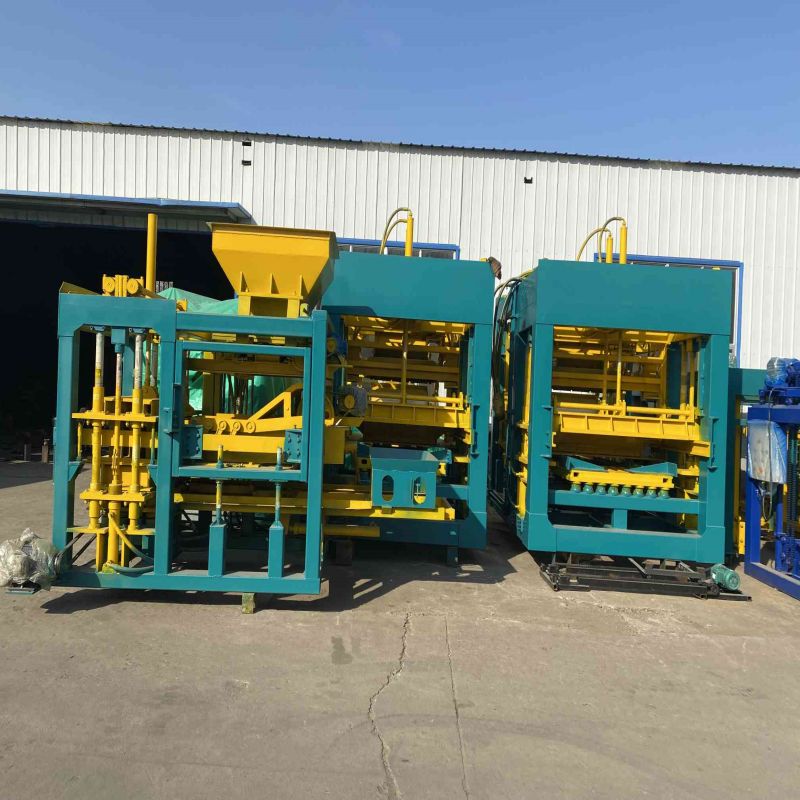
Image source:Aiwei block machine
Introduction
South Africa, a nation with a diverse cultural heritage and a history of social and economic challenges, is undergoing a significant transformation as it grapples with rapid urbanization and the need for sustainable development. In this dynamic context, brick making machines are emerging as agents of change, reshaping the urban landscape and empowering sustainable urbanization. This article explores how brick making machines are playing a pivotal role in South Africa’s journey toward a more sustainable and inclusive urban future.
1. Urbanization and Sustainable Development in South Africa
As South Africa urbanizes at an unprecedented rate, the challenges of housing, infrastructure, and resource management become increasingly complex.
- Urban Growth: Rapid migration to cities has led to increased urbanization, placing strain on resources and infrastructure.
- Housing Demand: The need for affordable, quality housing is paramount to address social disparities and promote inclusivity.
2. Mechanized Brick Production: A Catalyst for Change
Brick making machines are at the forefront of sustainable urbanization in South Africa, driving positive change across various dimensions.
- Efficiency and Speed: Mechanized production meets the scale and speed required for urban development.
- Resource Efficiency: Machines optimize material usage, reducing waste and promoting sustainability.
3. Affordable Housing and Social Inclusion
Mechanized brick production addresses the critical issue of affordable housing and promotes social inclusivity.
- Cost-Effective Solutions: Efficient brick production contributes to the creation of affordable housing options.
- Empowering Communities: Entrepreneurs and local businesses benefit from brick-making opportunities, fostering economic growth.
4. Quality and Durability: Building for the Future
Brick making machines enhance the quality and longevity of urban infrastructure.
- Structural Integrity: Mechanized processes ensure uniformity, strength, and stability in brick products.
- Sustainable Infrastructure: Quality bricks contribute to the longevity and sustainability of buildings and urban spaces.
5. Job Creation and Economic Empowerment
Mechanized brick production stimulates job creation and economic empowerment in South Africa.
- Employment Opportunities: Machine operation, maintenance, bricklaying, and associated services generate employment.
- Local Industries: Mechanized brick production supports the growth of local businesses and industries.
6. Environmental Responsibility: Eco-Friendly Urbanization
Brick making machines align with South Africa’s commitment to environmental sustainability.
- Resource Conservation: Efficient production minimizes material wastage and optimizes resource utilization.
- Reduced Carbon Footprint: Advanced firing techniques and energy-efficient kilns reduce emissions and energy consumption.
7. Innovation and Technological Integration
The adoption of brick making machines drives innovation and technological advancement.
- Digital Solutions: Machines integrated with digital tools optimize production processes and resource management.
- Design Flexibility: Mechanized production allows for diverse brick designs, contributing to architectural innovation.
8. Addressing Informal Settlements: Pathways to Upgrading
Mechanized brick production plays a role in upgrading informal settlements and improving living conditions.
- Durable Housing: High-quality bricks contribute to the construction of safer and more durable housing.
- Community Upliftment: Brick-making initiatives empower communities by creating job opportunities and fostering development.
9. Case Studies: Transforming Urban Realities
Real-world examples illustrate the impact of brick making machines in shaping sustainable urbanization in South Africa.
- Community-Led Initiatives: Local communities leverage brick production for self-sustaining development projects.
- Affordable Housing Complexes: Mechanized brick production contributes to the creation of affordable housing estates.
10. Future Prospects: Navigating Challenges and Innovations
The future of mechanized brick production in South Africa holds promise for further innovation and progress.
- Technological Integration: AI, IoT, and automation are set to optimize production processes and enhance sustainability.
- Capacity Building: Training programs and skill development initiatives empower local entrepreneurs.
Conclusion: Forging a Sustainable Urban Future
Brick making machines are not mere tools; they are catalysts for transformative change in South Africa’s urban landscape. They bridge the gap between housing demands, environmental concerns, and economic empowerment. The story of brick making in South Africa is one of sustainable urbanization, social inclusion, and economic growth—a story where innovation meets tradition to build a future that is equitable, resilient, and prosperous. As South Africa navigates the complexities of urban development, brick making machines stand as beacons of hope, ushering in a new era of sustainable cities where quality housing, economic opportunities, and environmental responsibility converge for the betterment of all citizens.
